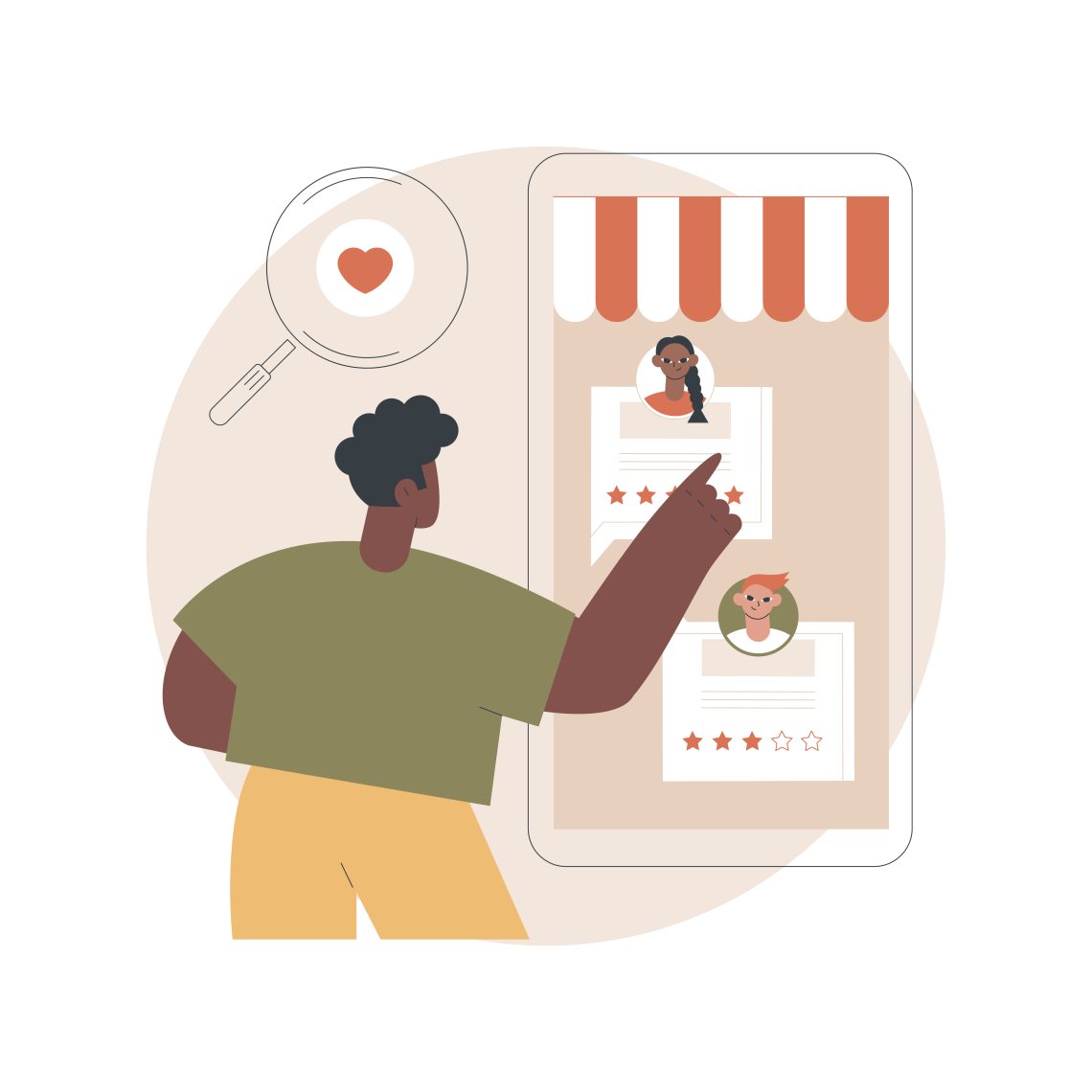You spent days, maybe weeks, crafting or finding great products and perfecting your service delivery. It may have taken your savings and even a loan or two to get there. Now, it’s time for customers to start buying and for cash to flow in.
Except, they aren’t.
Changing our habits, including buying habits, takes effort. Few people will try eight brands of toothpaste to find the best one. Most of us just buy the brand with better ads, the one we grew up using, or one that someone recommended. With Customer Acquisition, you can persuade consumers to buy your products or use your service and become your customers.
What Is Customer Acquisition?
Customer Acquisition is the process of getting people to buy and keep buying your products or using your services. The best way to do this will vary for every business and budget. We want customers, it’s true, but we don’t want to burn out or spend too much getting them.
With Customer Acquisition, we want a system that lasts and can quickly be adapted to changes in the market. What we don’t want is to use a Customer Acquisition Plan that worked 10 years ago or one we have to change every 2 weeks.
Why You Need a Customer Acquisition Plan
Why have a plan? Why not ‘just do it’? Well, two reasons.
One, you get better results by following a plan than you do by just diving in. You get to know what works, what doesn’t, and why.
Two, you get to know when you’ve met your target or failed to and when to take a break.
A plan lets you know which strategy works better, can be improved on, or is the most cost-effective. Generally, working with a customer acquisition plan gives better results than feeling your way through. That said, if you are the rare exception or couldn’t be bothered with planning, feel free to dive in headfirst (and close this article tab).
Now, let’s go find some customers.
Market Research
While your earlier market research must have helped you choose which product(s) to develop, goods to stock, or service(s) to offer, we are now going to narrow our focus on using them. Like a trained sniper zooming in on the target, we have to find the people who are going to buy, use, and fall in love with them.
What’s your favourite brand of cat food? Unless you have a cat, you probably haven’t thought much about it. Most people won’t care about products or services they don’t need. With market research, you can find and focus on those who need your products or services and may become customers while eliminating the indifferent ones.
Identifying people who have a problem your products solve or desire an experience they provide makes you more effective and efficient. When selling a line of glittering makeup, trendy young ladies are a better target audience than middle-aged professionals. By knowing who your product or service has the greatest appeal to, you get them between your crosshairs and have them lined up for the perfect headshot. Sorry, errm…Customer Acquisition Strategy.
Customer Acquisition Strategies
A Customer Acquisition Strategy is an approach you adopt to reach new customers and persuade them to buy and use your product or service. This is your battle plan for gaining and holding territory in a new customer’s heart.
A good strategy is based on an understanding of your target audience, their buying behaviour, and how best to reach them. Do they shop online or buy in stores, pay cash, or electronically? Do they buy on impulse or have strict budgets? This information should inform your choice of strategies.
- Referrals
Few things will get you new customers as fast as referrals. They will help you sell your product or service almost effortlessly. As people rarely refer subpar products or businesses, you need to deliver quality products and services. To get even more referrals, you may have to ask for and reward them.
By providing incentives for people to refer and patronize you, you can quickly increase the number of your customers. Dropbox, PayPal, and Piggyvest are some brands that have used referrals with great success.
If you can’t pay your customers to refer you, then ask with a smile, especially after a good review or rating.
- Social Media Marketing
Many people use social media daily, and some of them are your potential customers. Social media marketing is using social media to display your business, build a following, and sell your products or services.
You can present your business, share promotional content, and engage with potential customers while building a following. You can also pay the platform or an influencer to promote your content or products, allowing you to reach new users, sell more products, and gain more followers. (Aside: Check out our article on influencer marketing)
Referral programs and giveaways work well with social media marketing as they create an incentive for your customers to help you reach more people and expand your following. Businesses in industries from Cosmetics to Banking have used it to great effect.
- Events
Local businesses can use events to get customers, media attention, and more eyes on their products. Although it can be costly, its benefits can, in some cases, outweigh the cost. Events can help you build synergy with other business owners and improve your brand and business image.
Depending on your target audience, events can take many forms, from hangouts and concerts to wine tasting and book readings. Inviting local bloggers and OAPs can also give your business some media coverage. By sticking to open-air events and partnering with other local businesses, you can reduce the cost of your event and increase its impact.
For maximum impact, events should be held at a time when most of your target audience will be available to attend. Other strategies can also be combined with events. Attendees can use and share hashtags about events before or after it; submit their emails to receive passes, tickets, or coupons; or see short video ads at intervals.
- Display Advertising
When you place ads in high-visibility locations or distribute them physically or electronically, you are engaging in display advertising. It relies on catchy media that grabs attention and reaches large numbers of people. Display advertising was previously restricted to offline media like television, billboards, newspapers, signs, and leaflets.
With the growth of the internet, you can now put web-based ads in front of your target audience through their screens. They are also harder to ignore or discard. With web-based ads, you can target potential customers using their browsing history.
While it’s very effective for reaching large audiences and creating awareness, display advertising gets repetitive and annoying quickly. However, if your business will benefit more from the attention, it’s a good strategy to adopt, especially when combined with another CAS.
- Content Marketing
With a regular influx of new brands, more people are now making informed buying decisions. Beyond basic differences, they want to know what’s unique about your product or service and why they should choose it over another. Content Marketing allows you to guide and win over these consumers.
By creating informative and engaging content around your product, niche, or industry, you can inform, advertise, show expertise, and build a following, all of which can get you more customers. Content Marketing is also relatively cheap and a nice way to filter for your target audience.
As they have a high rate of engagement, pictures, blogs, and videos, especially, are great mediums for content marketing. Although some will better suit your product or industry, creating high-quality content with any of these media will help you engage and persuade some of your target audience. Optimizing your content for search engines can also improve your ranking and make it more visible to your target audience.
The content marketing approach is great for connecting with customers and prospects in an informal, low-risk manner. This gives you access to unfiltered feedback that helps you evaluate and improve your product or customer acquisition plan.
- Email Marketing
Email Marketing is a gradual approach to getting customers and works best for expensive or subscription-based products. It gives you time to cultivate prospects through emails that show why your product or service is good for them and why they should buy or subscribe to it. It also helps filter out people with low or no interest in your product or niche.
By offering good content and value, you can easily gain and keep new customers. You can also reach more people as it is easy to get people to submit their emails and advertise aggressively. The worst thing that could happen is for them to unsubscribe.
Email Marketing is great for building relationships, as you can send customers birthday greetings and ‘just-for-you’ offers. Advertising discounts and events through it also tends to work better as it has a personal, exclusive feel to it. It is also great for measuring customer satisfaction, getting feedback, and pitching new ideas.
- Search Marketing
Each time we search for a word, the first few results get the bulk of our attention. Those links get to the first page by ranking ahead of others or by being paid for. Links with “Ad” in front of them are paid, while the regular ones are organic. Search marketing is building promotional content, ads, and offers around a keyword and trying to rank high for it.
By targeting specific keywords, search marketing lets you focus on people seeking information to make buying decisions. Your content or ad shows up in their search results and influences their decision. You can raise your ranking by creating content optimized for the search engine or paying to have your link ranked with them.
Customer Acquisition Cost
If you get too caught up in the process of getting customers, your customer acquisition cost can rise very quickly. This is the cost of gaining one customer. You can calculate it by dividing your marketing costs by the number of customers gained.
You should generally start with the most cost-effective option and try others if you want more results. Good market research will quickly reveal the options with the highest ROI. As a rule of thumb, the bulk of your marketing spending should go to these channels as they give the best results.
Conclusion
As consumers use different mediums, a multi-pronged approach will generally work better than a single strategy. Combining strategies allows you to reach the maximum number of your target audience multiple times. While your audience may spend most of their screen time watching sports, a well-placed social media ad may have an outsized impact in getting them to buy your product.
The best plan will keep up with and adapt quickly to changes in consumer behaviour and preference. In today’s fast-changing market, you can’t afford to stick to a plan because it worked before. You should take periodic breaks to review and evaluate your plan while working on keeping the customers you’ve already gotten. This helps you to avoid relying on vanity metrics like follower count and likes and focus on what matters.
Lastly, a Customer Acquisition Plan is not a treasure map to guaranteed customers. It is more like a complex compass with many moving parts, and the best one is the one you make yourself. You should let your imagination and creativity guide you toward the best plan for your product and target market.
What’s your experience with Customer Acquisition Plans? Is there any strategy you’re planning to try?
Let me know in the comments.




